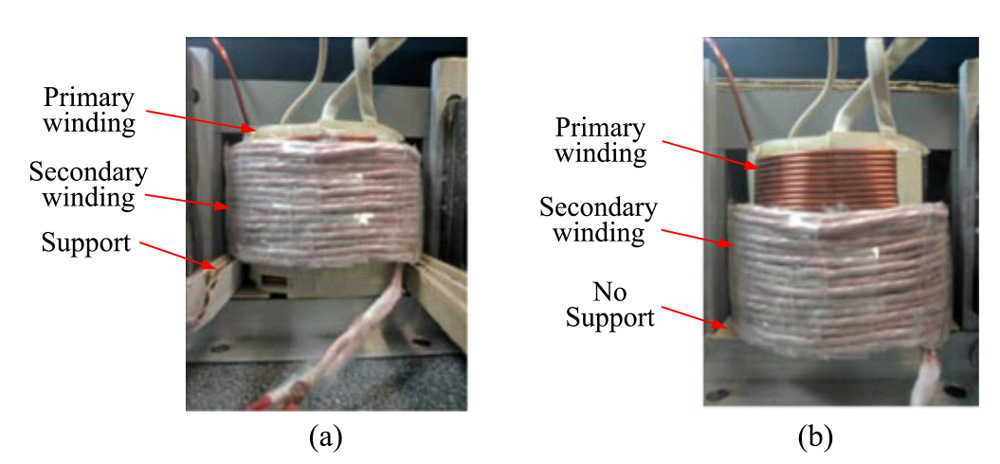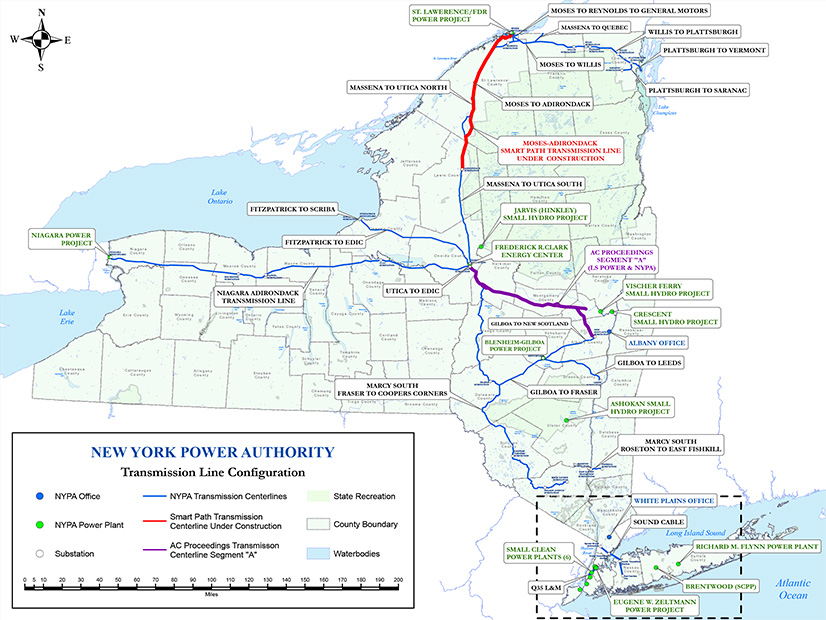A group representing the Northwest’s extensive network of publicly owned utilities has asked the Bonneville Power Administration to choose SPP’s Markets+ when the agency issues its day-ahead market “leaning” in April.
The Portland, Ore.-based Public Power Council (PPC) laid out its case for favoring Markets+ over CAISO’s Extended Day-Ahead Market (EDAM) in a Feb. 23 letter addressed to BPA Administrator John Hairston.
The PPC’s argument included the need to defend the right of BPA’s “preference” customers to access low-cost electricity from the Federal Columbia River Power System, continued reservations about CAISO’s ability to alter its state-run governance structure and concerns about the fairness of CAISO’s existing market practices — with the last point eliciting a pointed response from CAISO provided to RTO Insider.
The letter also praised SPP’s stakeholder-driven approach for developing Markets+.
“Currently, the Southwest Power Pool (SPP) Markets+ offering is PPC’s preferred day-ahead market option, and we support BPA making a similar declaration in its April leaning,” said the letter signed by PPC Executive Director Scott Simms and members of the group’s Market Development Committee (MDC). “While information is still evolving, the majority of criteria that PPC has evaluated supports continued pursuit of BPA’s participation in Markets+.”
The letter was signed by all eight members of the MDC, which includes representatives from Idaho Falls Power, Tacoma Power, Fall River Rural Electric Cooperative (Idaho), Clatskanie (Ore.) Public Utility District, Pacific County (Wash.) PUD, Modern Electric Water Co. (Wash.), Grant County (Wash.) PUD and Snohomish County (Wash.) PUD.
The MDC crafted the letter at the direction of the PPC’s Executive Committee, Lauren Tenney Denison, the organization’s director of market policy and grid strategy, told RTO Insider.
Until recently, the MDC included Seattle City Light’s (SCL) Emeka Anyanwu, who left the utility last fall to take over as CEO at Lincoln Power in Nebraska. SCL, which operates a small balancing authority area, has been a key participant in the West-Wide Governance Pathways Initiative, which is working to establish the framework for a Western RTO that expressly includes CAISO and rests on the ISO’s technical capabilities. SCL did not respond to a request for comment on its position on BPA’s market choice in time for publication of this article.
‘Dual Roles’
The Feb. 23 letter indicates PPC members clearly doubt the Pathways Initiative will be able to settle the CAISO governance issue in a manner they think is equitable for entities outside California.
“Current California law stipulates several areas that keep CAISO’s mission and operation tied with the interests of California,” the PPC letter says. “First, CAISO’s corporate status is tied to oversight from the state of California and thus the CAISO Board of Governors can neither irrevocably delegate authority nor allow another entity to unilaterally make decisions on market policies.”
Second, the ISO’s Board of Governors is appointed by California’s governor and confirmed by the state Senate, the letter notes.
The letter also argues that CAISO’s independence as the operator of a multistate market is “further confused” by its “dual roles.”
“The CAISO functions both as a market operator and as a participant Balancing Authority Area (BAA) in the [Western Energy Imbalance Market] and EDAM markets. At times there is a lack of transparency about which role CAISO is serving when taking certain actions. This only adds to concerns about equity among market participants,” the letter states.
Tenney Denison told RTO Insider that legal analysis conducted by the PPC and CAISO’s own legal staff as part of work by the WEIM’s Governance Review Committee indicates “a legislative change would be necessary to provide PPC members the assurance they need that their interests would receive equal consideration under CAISO governance.
“We are closely watching the approach that is being taken by the Pathways Initiative, including developing a legal review of multiple options, and look forward to discussing those results with other stakeholders,” she said. “We are uncertain at this time whether there would be sufficient support for the types of changes that PPC is seeking and there is not a clear timeline of when such changes could be implemented if they are pursued.”
The PPC’s governance concerns extend to CAISO market design issues that the group contends will carry over into the EDAM from the WEIM. The letter particularly points to market outcomes stemming from a sharp January cold snap in the Northwest, when the region was forced to import large volumes of power from the Rockies and Southwest regions, with supplies from the latter wheeled through the ISO. (See WPP: Cold Snap Showed ‘Tipping Point’ for Northwest Reliability.)
Energy flows during the Jan. 12-16 weather event, which caused four entities to enter an Energy Emergency Alert (EEA) Watch, EEA 1 or EEA 3, and caused significant northbound transmission congestion out of CAISO and into Oregon, leading some Northwest entities to contend the ISO unfairly raked in the lion’s share of the revenue associated with that congestion, a point amplified in the PPC’s letter.
“CAISO’s congestion policies resulted in over $100M of congestion revenues being collected by the CAISO BAA, despite most of the generation serving the Northwest coming from outside California. The policy creating this result is explicitly maintained in the CAISO EDAM,” the PPC wrote.
But CAISO contested that assertion in its Feb. 27 email to RTO Insider. The ISO said outages on Oregon transmission lines during the cold snap meant the ISO could not send some energy north without damaging the Northwest grid. The resulting congestion on the California-Oregon Intertie resulted in CAISO collecting about $100 million in congestion rent from Northwest entities.
“Despite the assertions in the PPC letter, the ISO does not collect congestion rent for itself,” CAISO said in the email. “It distributes it to holders of congestion revenue rights (CRRs). CRRs are mechanisms that guard against high congestion prices. They are available to a variety of market participants, including load-serving entities in the Pacific Northwest.”
The ISO also noted it operates the only mechanism in the West for managing congestion in the day-ahead time frame.
“Operators of transmission lines in the Pacific Northwest do not,” it said. “As a result, CAISO cannot ignore transmission constraints; it must avoid sending energy to areas where it cannot be received.”
“That is why the ISO had to take action, and why congestion rents were collected on the California side of the constraint of the border and not by entities in the Pacific Northwest,” the ISO said.
The PPC letter also raised another, more enduring complaint among Northwest electricity sector participants — that CAISO’s pricing policies don’t accurately account for the value of the region’s flexible hydroelectric generation.
“This means that the federal generating facilities funded by PPC members would receive lower compensation for their generation, thus increasing the costs borne by PPC members for operating those facilities. A study co-funded by the PPC showed the potential for CAISO’s pricing policies to reduce revenues for Northwest generators selling into the CAISO BAA by $100M-$200M per year,” the PPC wrote.
The PPC also points to a complaint shared with entities elsewhere in the West regarding CAISO’s decision, after California’s 2020 summer blackouts, to alter its tariff to restrict “wheel-throughs” in its territory during periods of extremely tight supplies. (See FERC Approves CAISO Wheel-through Rule Changes.)
“This policy, which was heavily criticized by non-California parties, demonstrates the California-centric nature of the CAISO decision making process,” the PPC said.
Stakeholders, Not Staff
The PPC’s critical comments about CAISO were matched by laudatory ones regarding SPP and Markets+.
“SPP Markets+ has an equitable, inclusive, representative and independent governance structure. It includes committees comprised of market participants and stakeholders, which has resulted in a high level of engagement in the market’s design,” the group said.
In a reference to CAISO’s more staff-driven model for initiating market changes, the PPC pointed out that in Markets+, “participants and stakeholders determine what proposals advance to the decision-makers, not SPP staff.”
Referring to the proposed board structure for Markets+, the letter noted that “decisions are also made by a ‘panel’ of independent members who have no responsibility or obligations to any group of participants over another. This decision-making process ensures all market stakeholders have a voice in what policies are explored, developed and ultimately implemented.”
The letter also points out that Markets+ includes elements that “will help BPA continue to serve its historic mission and return value to Northwest ratepayers for the federal assets they have financed through BPA’s rates.”
Those include price formation policies that “will more adequately compensate BPA (and all suppliers) for flexible and reliable generation made available to the market — particularly in times of scarcity,” as well as the ability to “attribute” generation to specific loads.
“PPC sees this as a useful tool for meeting BPA’s statutory obligation to serve preference customers from the federal system,” the letter said. “These and other tools included in Markets+ will also ensure that BPA customers can claim the environmental attributes of the low-carbon federal system,” helping PPC members to meet policy goals to reduce carbon emissions.
“As stated in their letter to Bonneville Power Administration, the PPC believes Markets+ will allow fair pricing for generation and the ability to attribute generation to specific loads,” SPP spokesperson Meghan Sever said via email. “While these are a few of the benefits most recognizable to this group of entities, there are many more benefits of participation in Markets+, and SPP is pleased to be a part of developing a market that provides financial and environmental benefits and enhances electric reliability in the Western Interconnection for years to come.”
Seams vs. ‘Superior Market Design’
The PPC letter played down the concerns among some industry stakeholders about potential costs and inefficiencies stemming from “seams” between two Western day-ahead markets. The issue was the subject of a recent study commissioned by the Western Power Trading Forum and Public Generating Pool. (See Western Market Seams Issues to Differ from East, Study Finds.)
“Seams do have the potential to reduce market efficiency, but they also exist today in multiple areas (not just market to market, but [between] different Resource Adequacy programs, different carbon regulations, etc.) and will continue to exist into the future,” the PPC wrote, noting the loss of efficiency “can be outweighed by the benefits of superior market design and governance.”
The group also expressed hope there will be “large incentives” for the two markets to work together to reduce seams issues “to the greatest extent possible, to facilitate continued trade.”
PPC expects seams impacts could be mitigated by “significant amounts” of trading outside the day-ahead market.
“Multiple studies evaluating different market footprints have suggested that seams have the greatest potential to impact entities in California, who rely on imports of Northwest resources at a low price,” the letter said, pointing to studies conducted by the Western Markets Exploratory Group. “This should only work to create an even greater incentive for the existing CAISO market to work together with Markets+ to ensure that trading can continue.”
Asked how the PPC’s letter will influence BPA’s day-ahead market decision, agency spokesperson Nick Quinata said: “BPA appreciates the PPC’s participation in our public process and it is a comment we will consider as we continue to do our due diligence on whether or not to join a market and which market we select if we go that way.”



